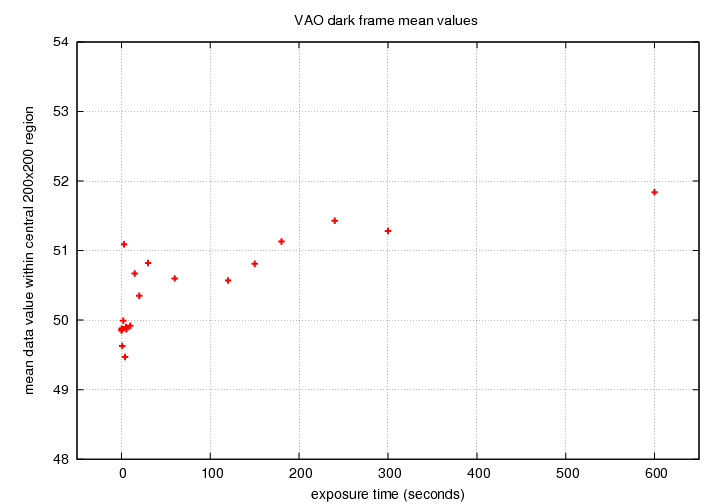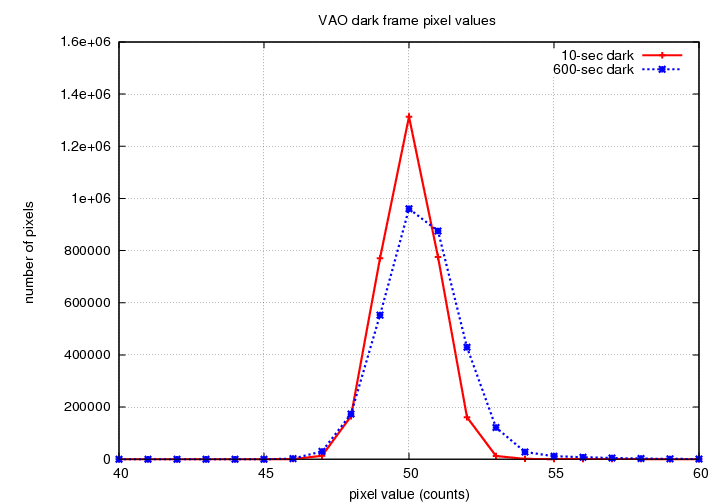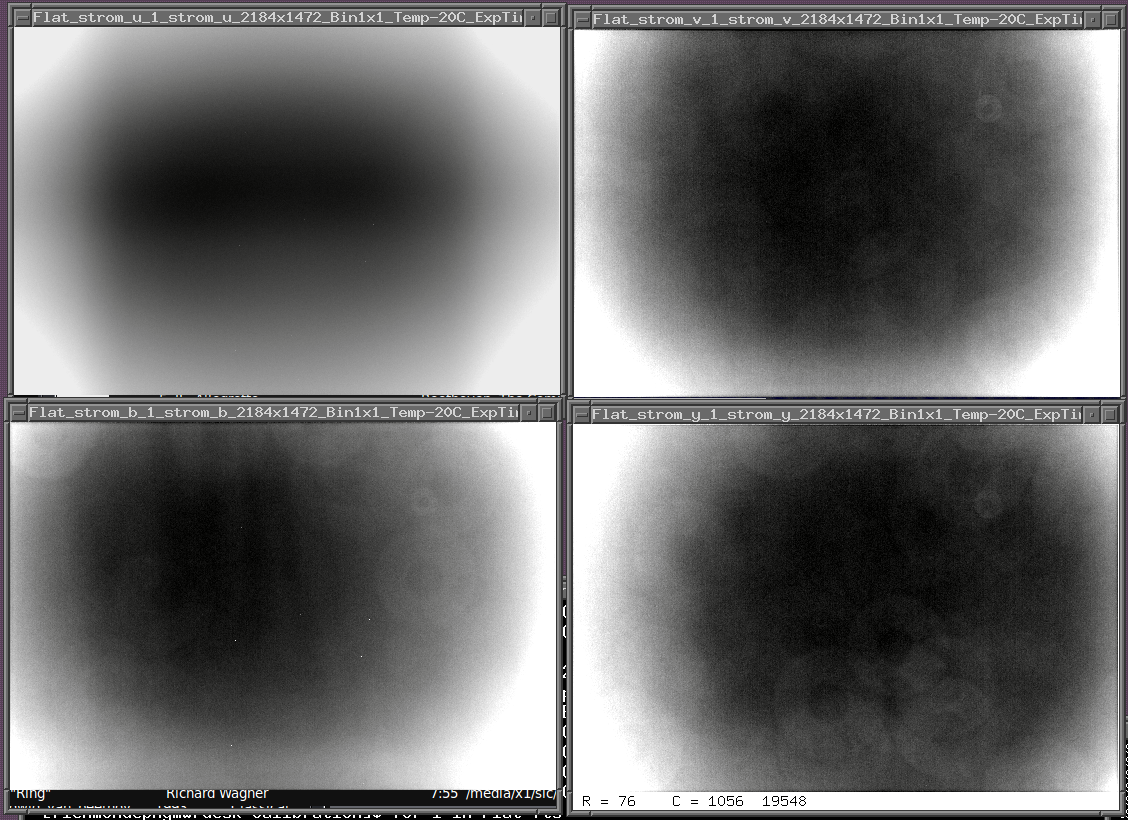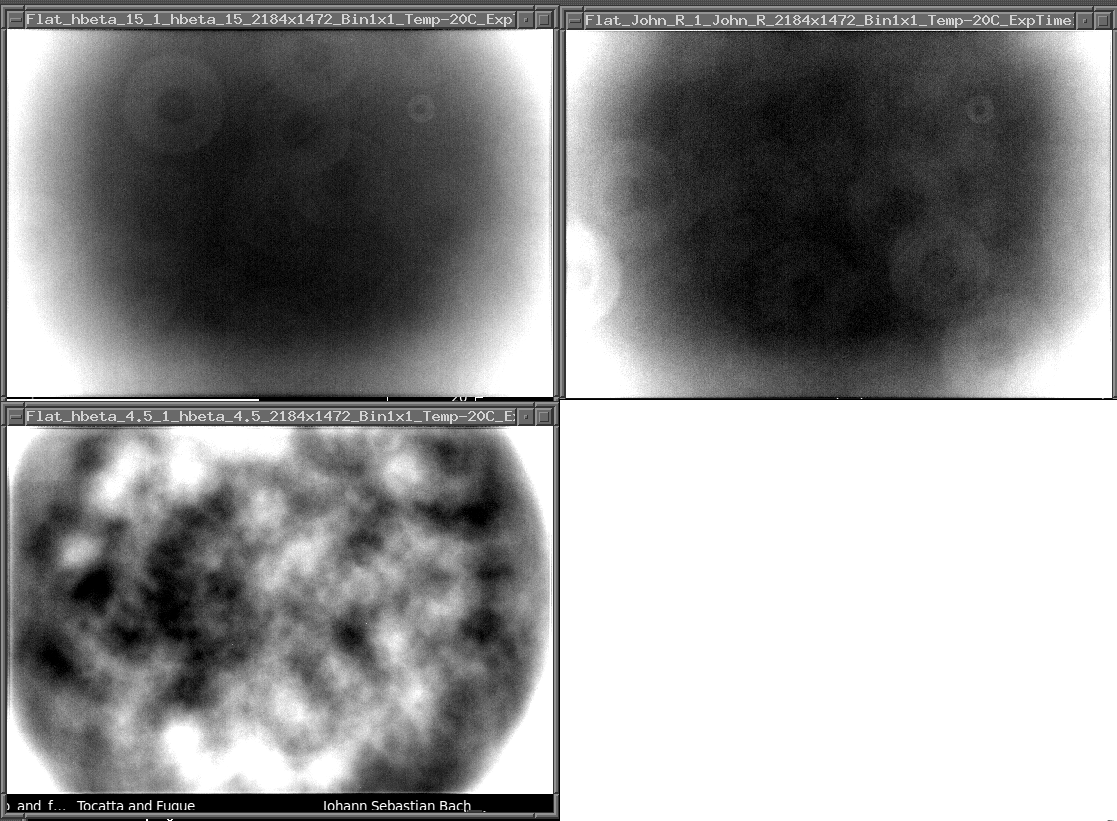
 Copyright © Michael Richmond.
This work is licensed under a Creative Commons License.
Copyright © Michael Richmond.
This work is licensed under a Creative Commons License.
If you are lucky, the target of your observations will lie very close to a standard star, so that both objects fit into a single CCD frame. In order to measure the properties of the target, you simply compare its number of counts in the image to the number of counts from the standard star.
(yes, yes, color corrections, but let's not get into that now).
But what if your target is far from any standard star, or, in fact, from any star with well-measured properties? In this case, it's necessary to perform all-sky photometry, comparing the properties of objects in one region of the sky to properties of objects in another.
Vazquez Astronomical Observatory dataset: Sep 05, 2012.
ASCII text file with list of images including name, exposure time, filter, airmass, and some other info.
Darks


Flats.

Note the appearance of narrow H-beta image: fringing. The "blotches" have an amplitude of about +/- 500 counts, in an image of mean value approx 15,000 counts. That corresponds to variations of +/- 3 percent or so.

 Copyright © Michael Richmond.
This work is licensed under a Creative Commons License.
Copyright © Michael Richmond.
This work is licensed under a Creative Commons License.